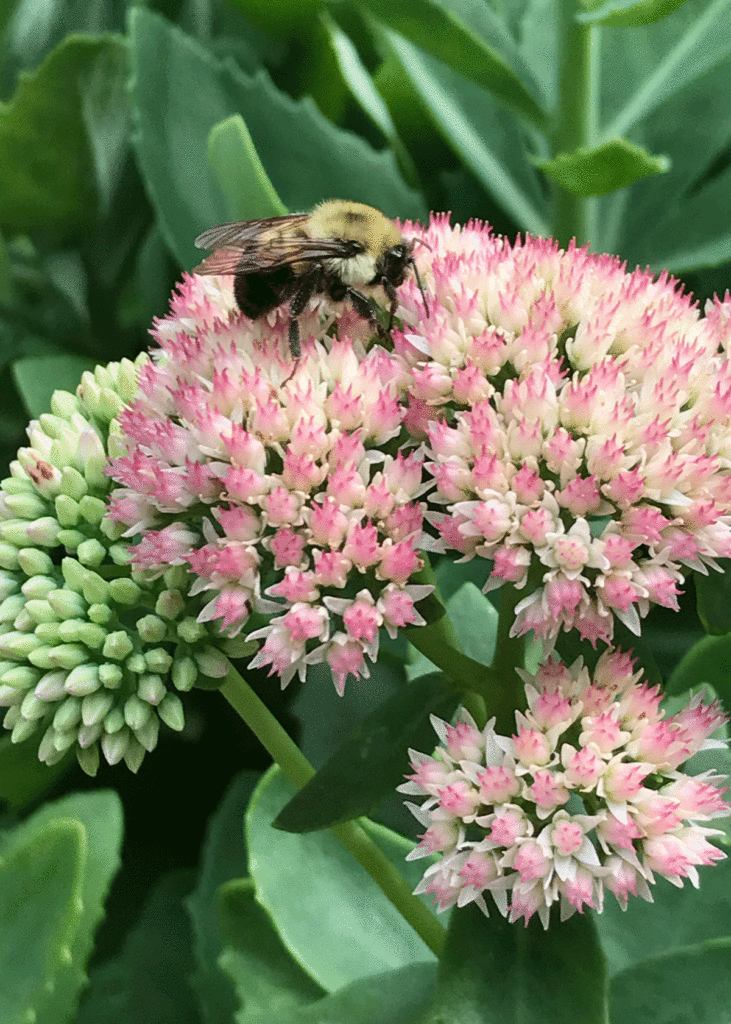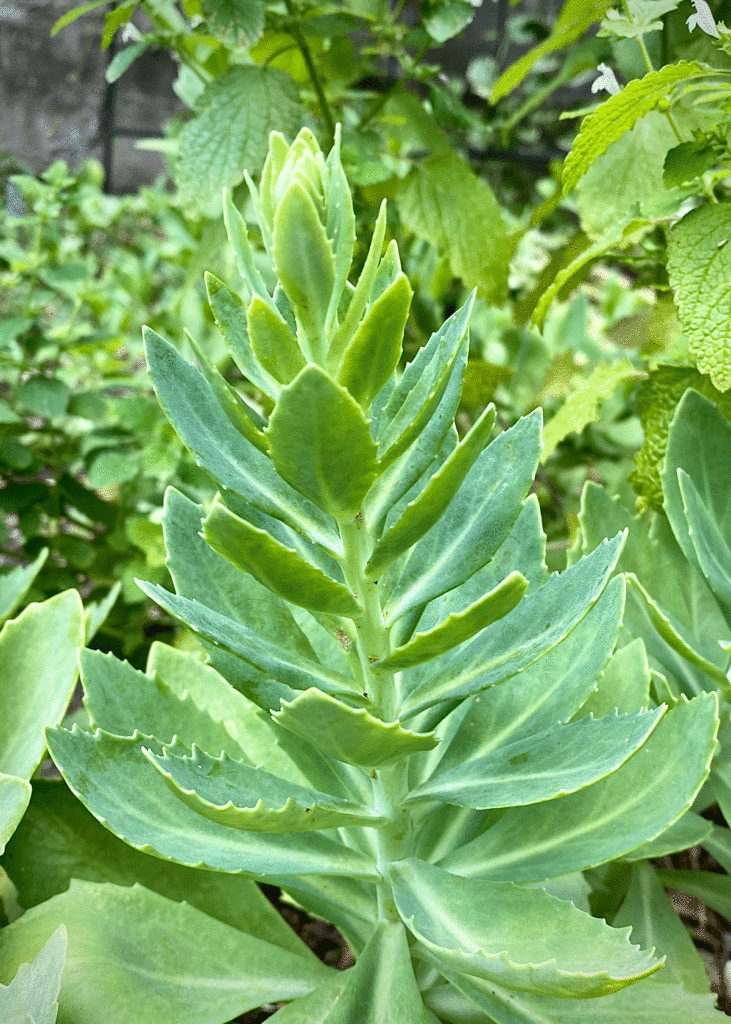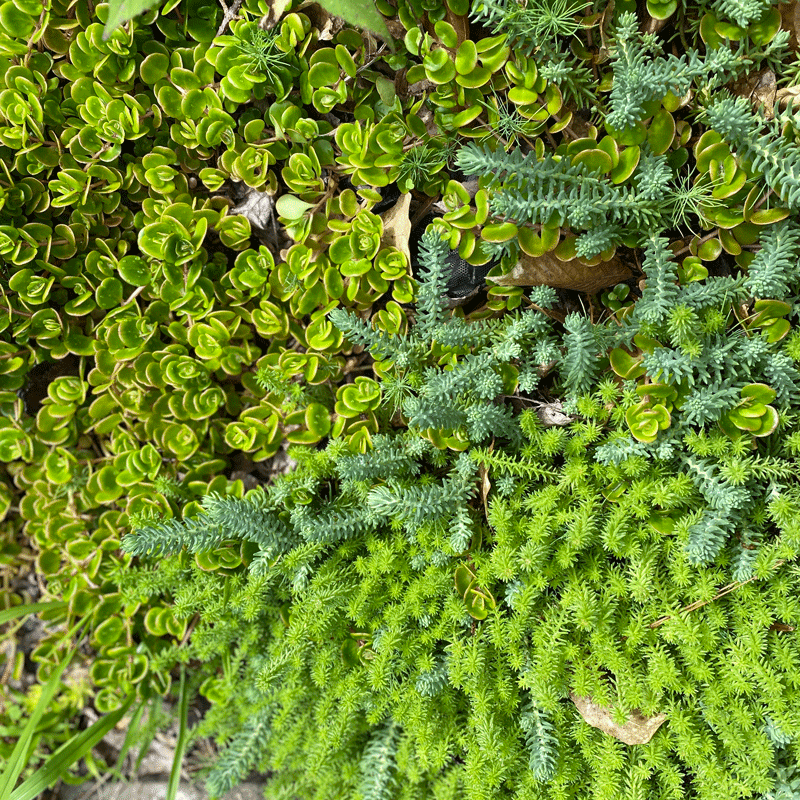I usually get a laugh when I tell folks that I’ve killed succulents. Pretty funny, right? The professional garden writer, the Master Gardener (extension volunteer), incapable of keeping easy-as-pie succulents growing. In my defense, I stand by the gardener’s creed, that you’re not truly a gardener until you’ve killed plants.
So there.
The truth is, some succulents are notoriously finicky, and my Georgia climate is not hospitable to them. If they survive summer’s heat and humidity, they’re done in by sub-zero temps in winter. Or the pot gets moved out of the precious indirect light and they get way too much sun and never get over it. That’s what happened to my sweet hens and chicks succulents that survived, even thrived for two full years in my garden. I tempted fate, moved the pot into full sun, forgot, then discovered that hens and chicks really don’t like to dry out.
Echeveria and its lovely pastel cousins never made it through a season.
Give Me Sedums Any Day
And that’s why I’m a sedum superfan. Like succulents, but not, sedums take what I throw at them and still hang around. Sedums, also called stonecrop, are a kind of succulent, but far more tolerant.
I’ve grown Autumn Joy sedum for years. It’s an upright perennial with pink blooms in late summer that bring in the bees and butterflies. Autumn joy is larger and more perennial-like than other stonecrops; that’s because it’s a cross between stonecrop and ice plant.

My favorite aspect of growing Autumn Joy is it is ridiculously prolific and easy to propagate. You simple break off stems, trim them up and plop them in potting soil, et voila, new plant. No need for rooting hormone, or weird items from your spice cabinet, just pot the stems in soil and be sure to keep it moist for a few weeks. It will live.
And so, in keeping with my mom’s advice to “use what you have, Lucy,” I’ve been using Autumn Joy (and a few less showy sedums) around the garden. In the planter at top, I cleaned out the perennial bed and took Autumn Joy stems and filled up a terra cotta pot with the little rosettes. Maybe it’s the frugal gardener’s echeveria? At least for the season.


At the end of the season, I can let them die back in the pots, or move them to corners of the garden where they can live out the winters and return again next spring. There’s always a place for sedums in my garden.
More Gardening Stories on A Cook and Her Books
Each summer, use stems of fishtail sedum to make “hair” for my head planter.
Learn how to grow a victory garden in your backyard.
Join the Conversation
Let’s talk about gardening and more on Instagram and Facebook. I’d love to hear from you!



Leave a Comment